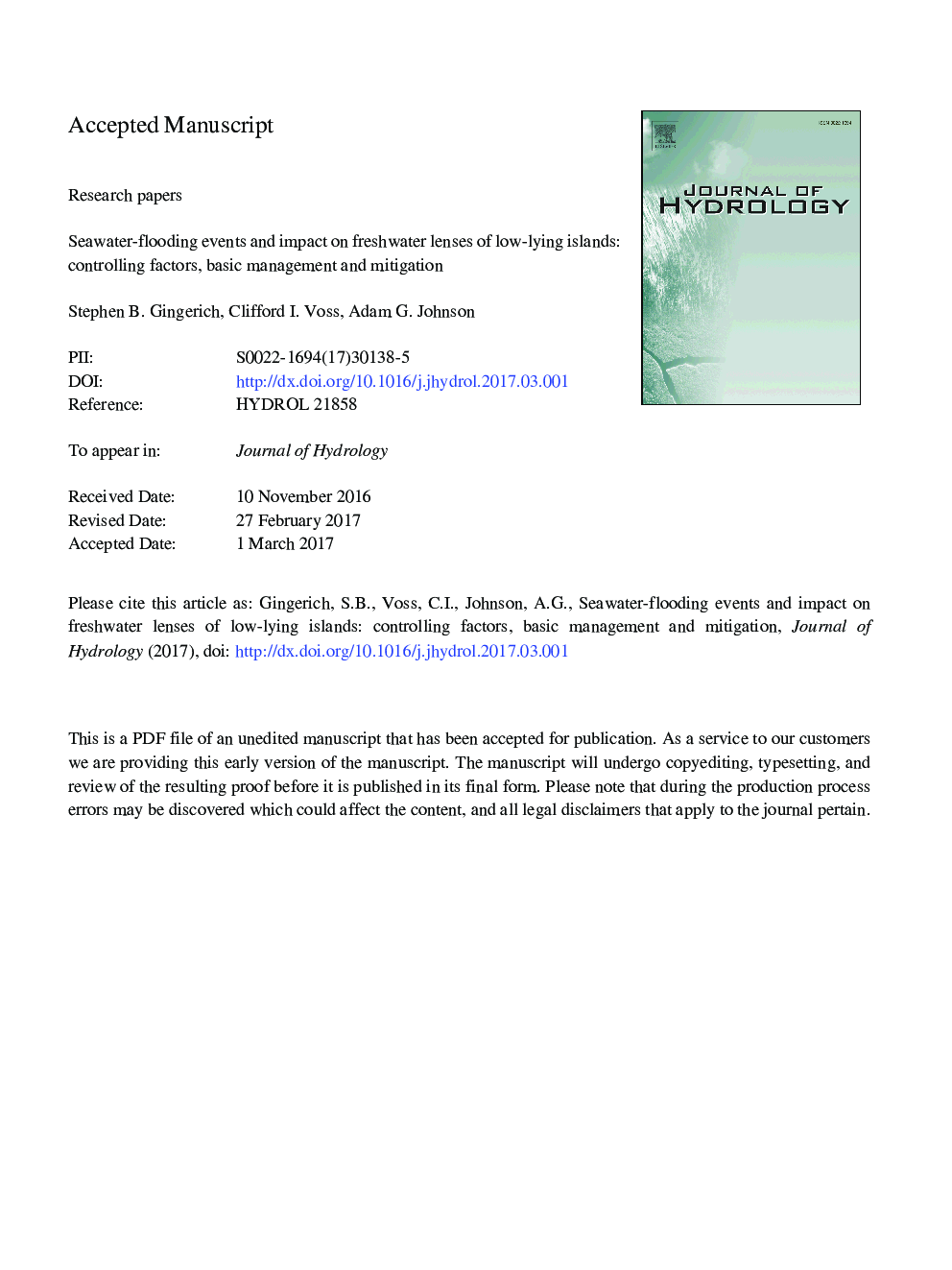| Article ID | Journal | Published Year | Pages | File Type |
|---|---|---|---|---|
| 5770869 | Journal of Hydrology | 2017 | 40 Pages |
Abstract
With the observed data as a guide, three-dimensional numerical-model simulation analyses reveal how recovery is controlled by the island's hydrology. These also allow evaluation of the efficacy of basic water-quality management/mitigation alternatives and elucidate how groundwater withdrawal and timing of the seawater-flooding event affect the length of recovery. Simulations show that, as might be expected, by adding surplus captured rainwater as artificial recharge, the freshwater-lens recovery period (after which potable groundwater may again be produced) can be shortened, with groundwater salinity remaining lower even during the dry season, a period during which no artificial recharge is applied. Simulations also show that the recovery period is not lengthened appreciably by groundwater withdrawals during recovery. Simulations further show that had the flooding event occurred at the start of the wet season, the recovery period would have been about 25% (5.5Â months) shorter than actually occurred during the monitored flood that occurred at the dry-season start. Finally, analyses show that artificial recharge improves freshwater-lens water quality, making possible longer use of groundwater as a water supply throughout each year, even when no seawater flooding has occurred.
Keywords
Related Topics
Physical Sciences and Engineering
Earth and Planetary Sciences
Earth-Surface Processes
Authors
Stephen B. Gingerich, Clifford I. Voss, Adam G. Johnson,
